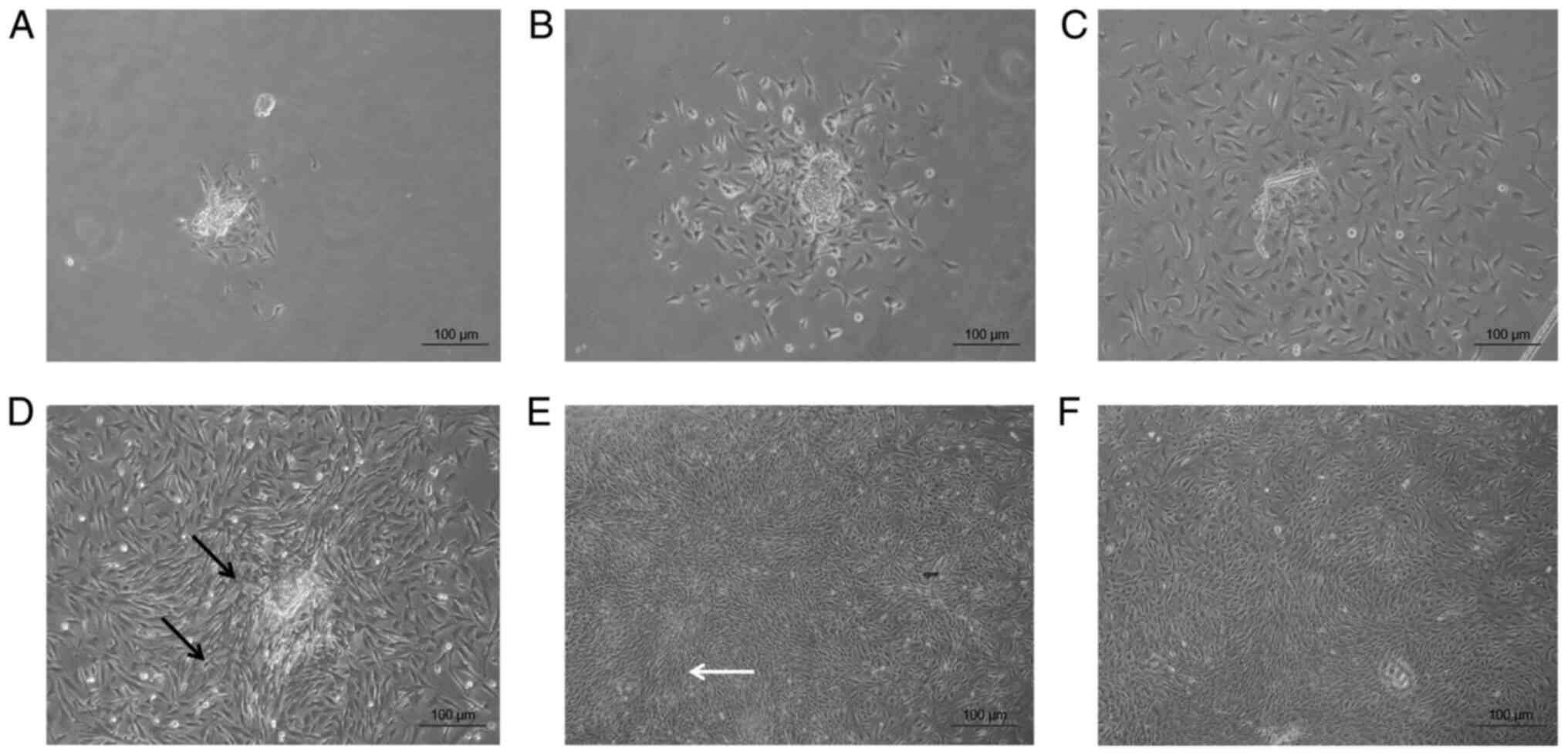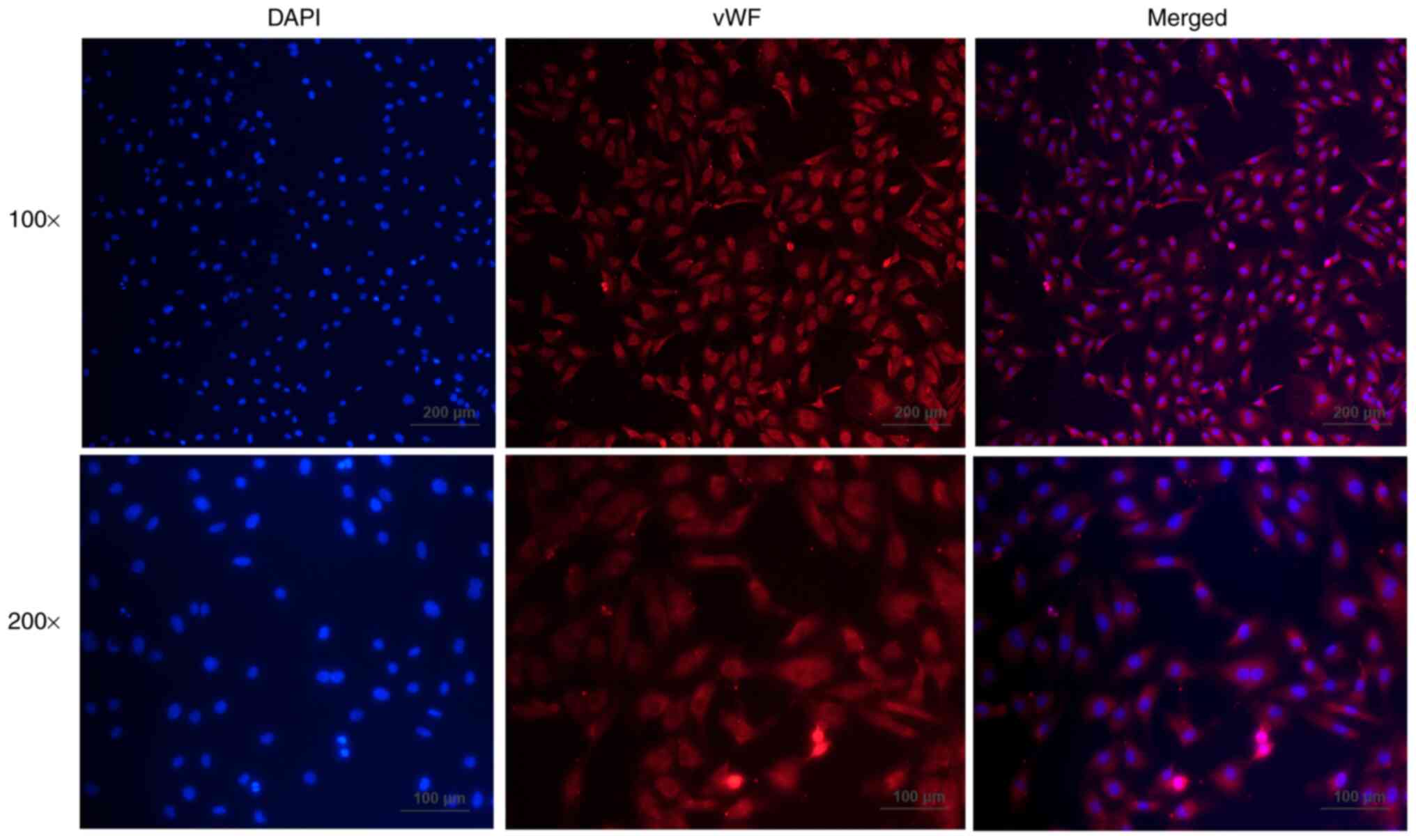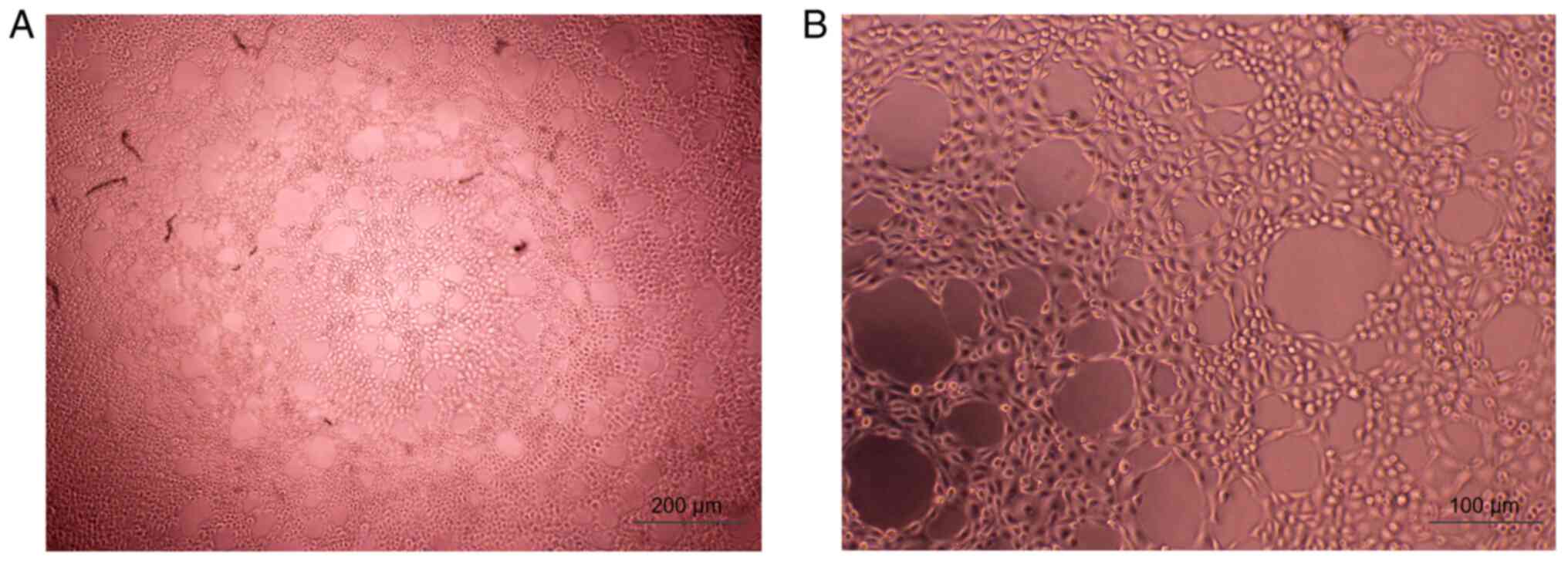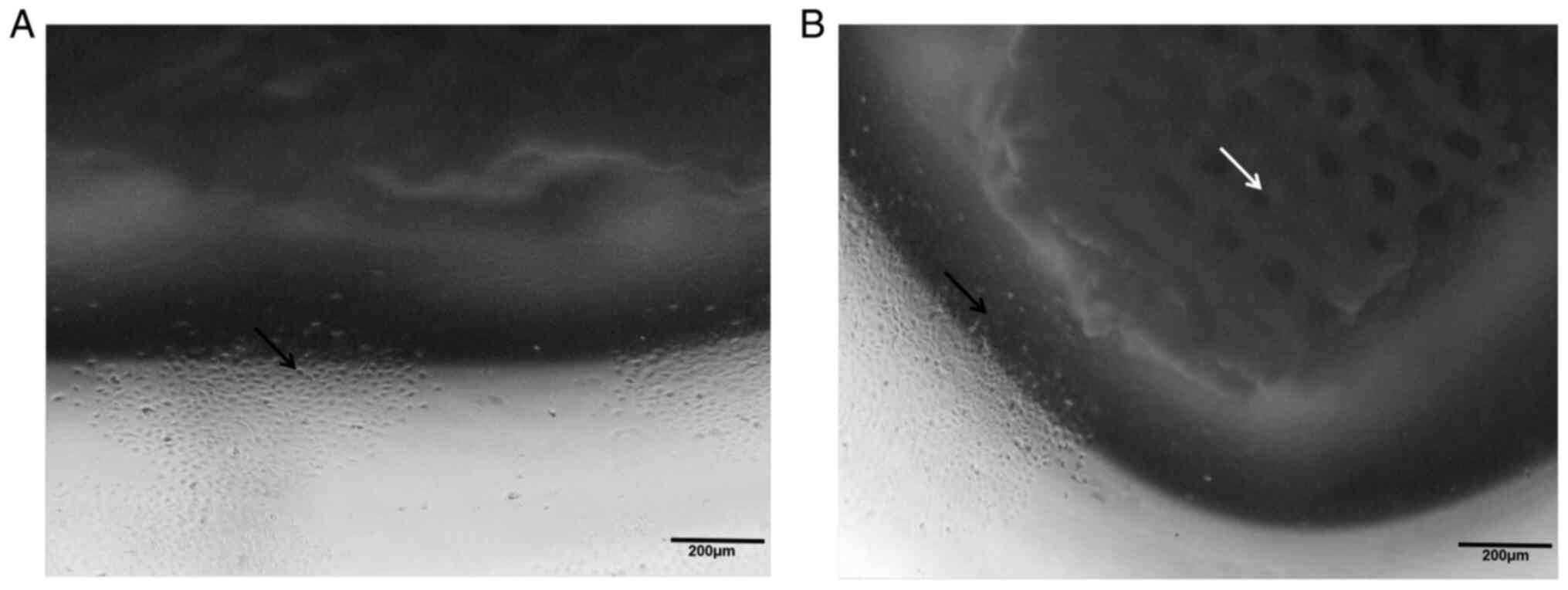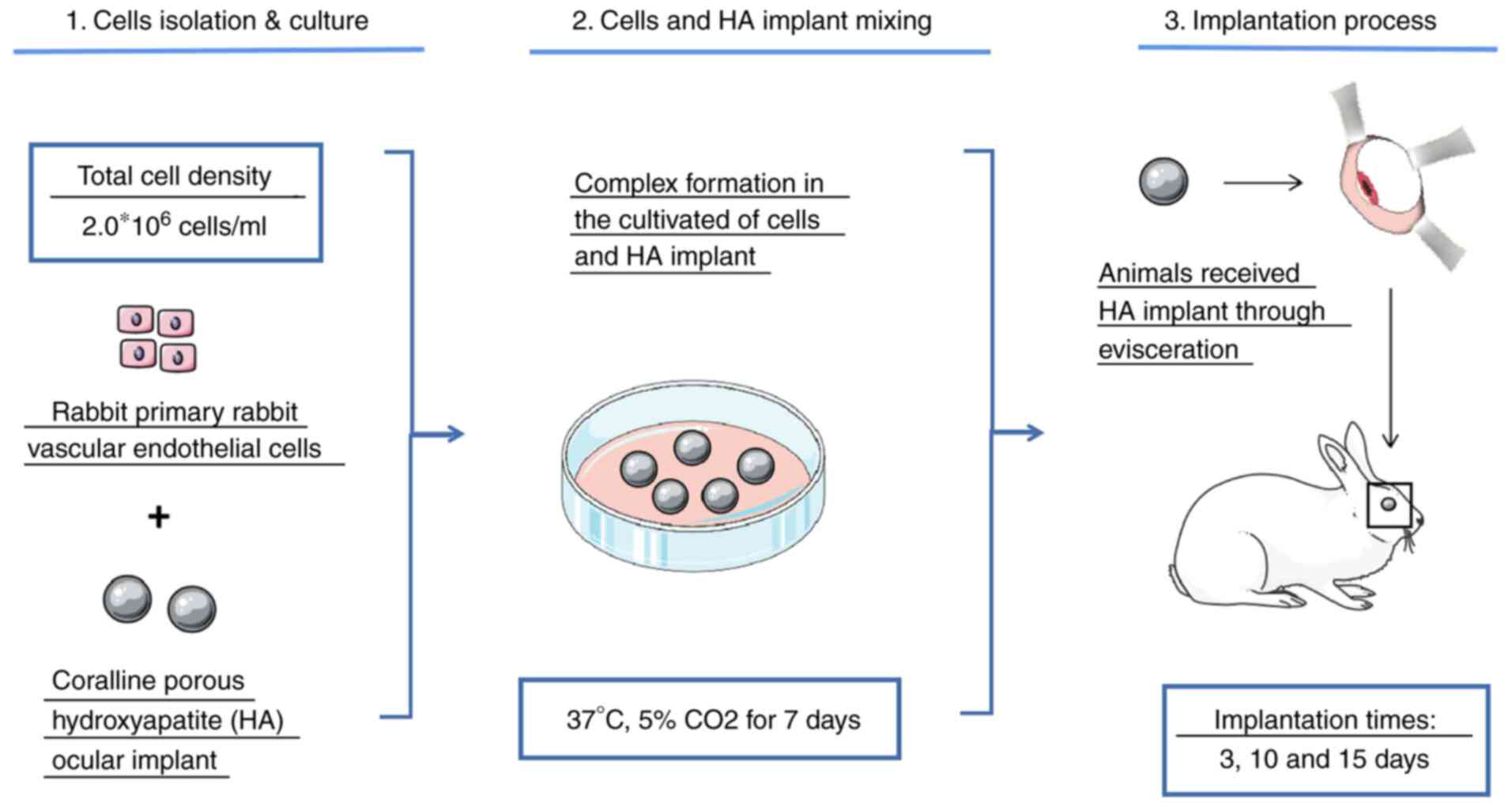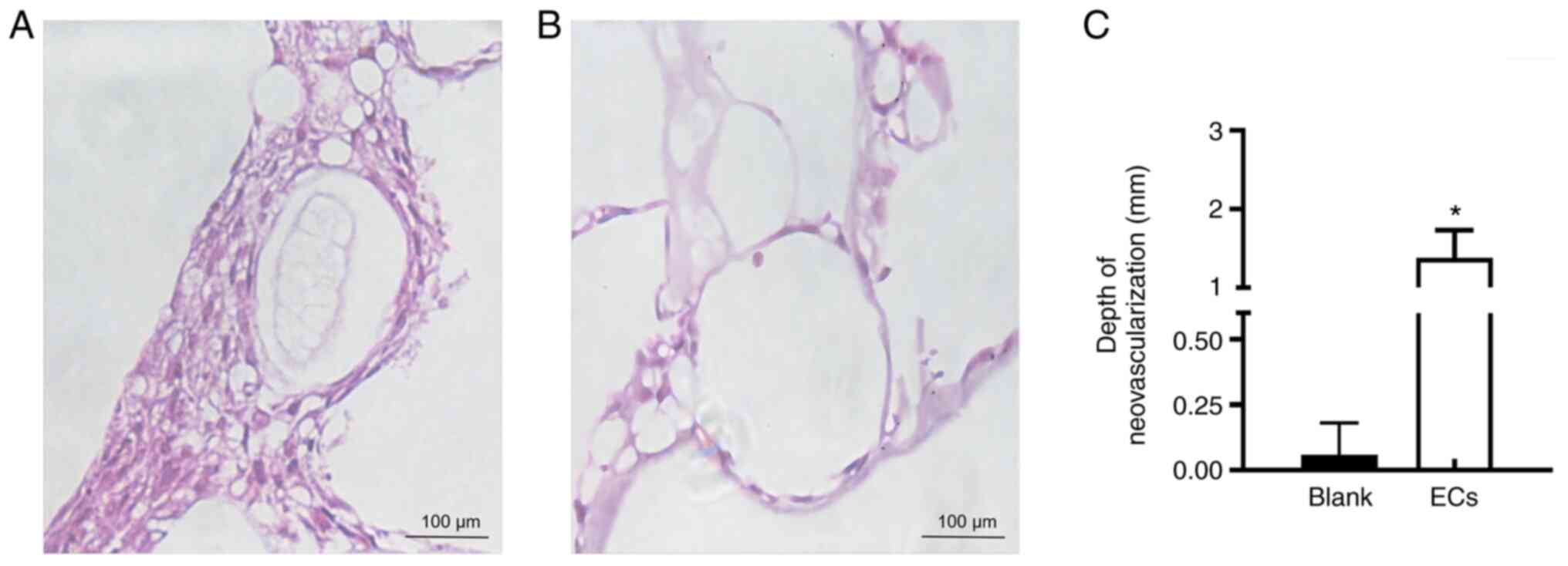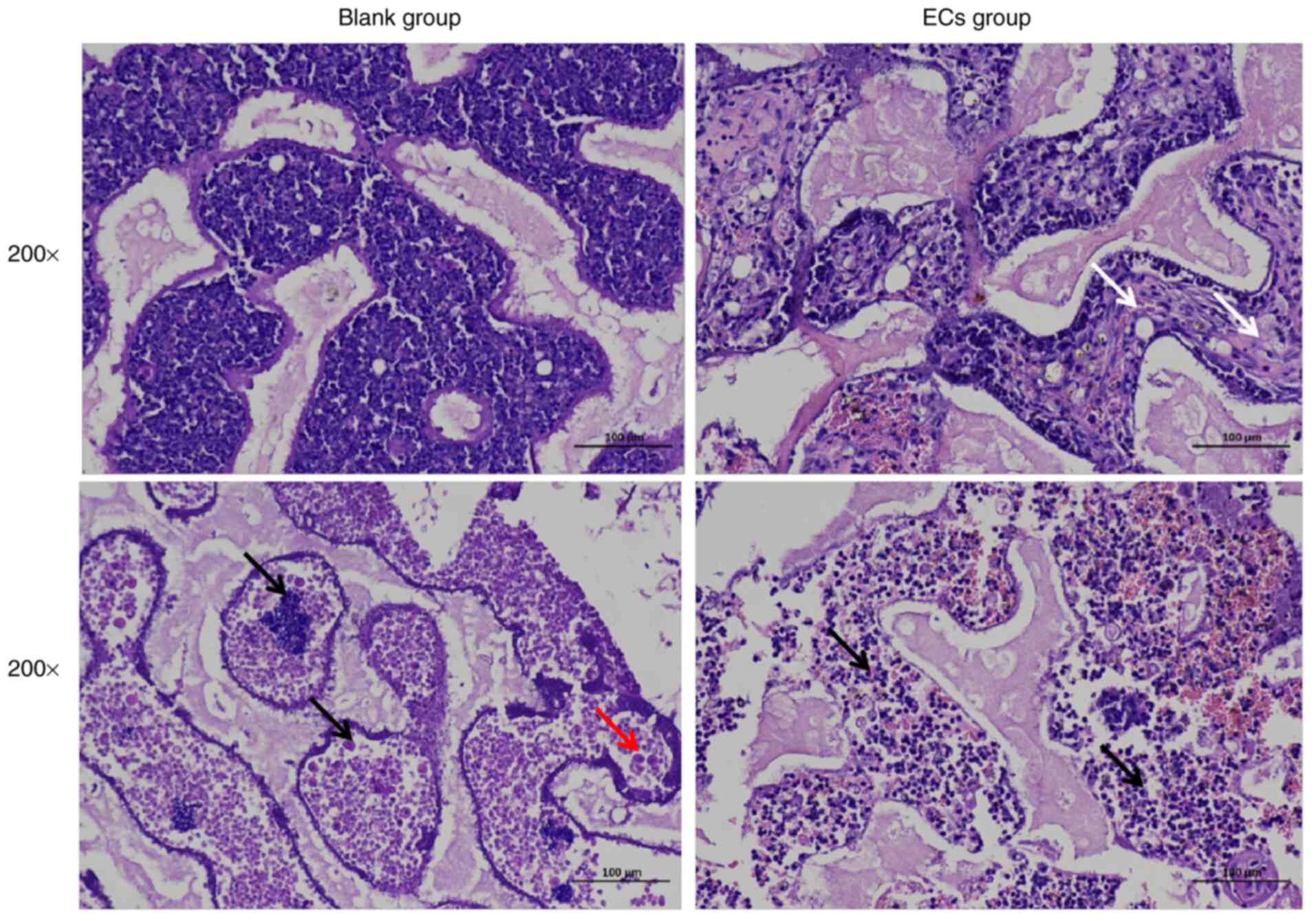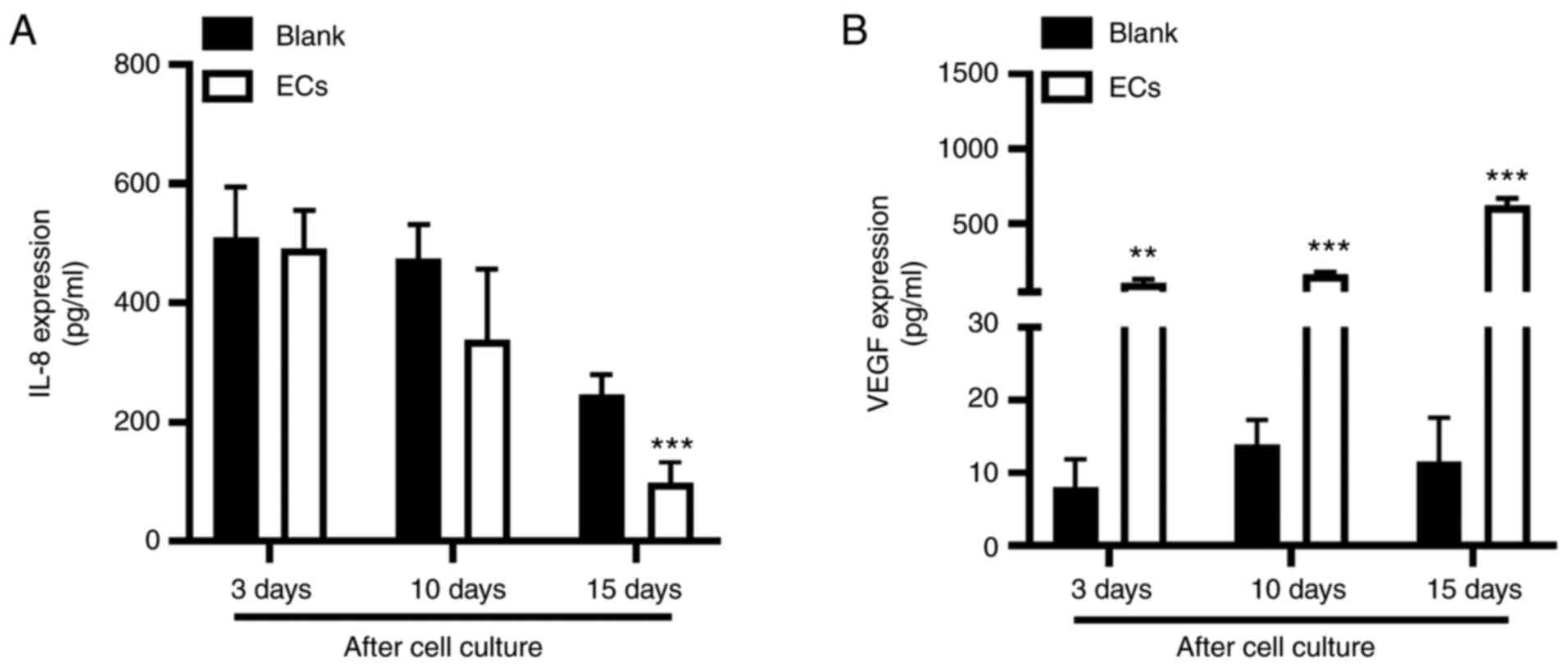|
1
|
Sahraravand A, Haavisto AK, Holopainen JM
and Leivo T: Ocular trauma in the finnish elderly-helsinki ocular
trauma study. Acta Ophthalmol. 96:616–622. 2018.PubMed/NCBI View Article : Google Scholar
|
|
2
|
Zhao Y, Zhao H, Lin JY, Pan Y, Zhai WJ and
Wang YC: Clinical and pathological analysis of ocular tumors in 504
children cases. Zhonghua Yan Ke Za Zhi. 52:764–768. 2016.PubMed/NCBI View Article : Google Scholar : (In Chinese).
|
|
3
|
Pförtner R, Mohr C, Daamen J and Metz A:
Orbital tumors: Operative and therapeutic strategies. Facial Plast
Surg. 30:570–577. 2014.PubMed/NCBI View Article : Google Scholar
|
|
4
|
Kasper FK, Melville J, Shum J, Wong M and
Young S: Tissue engineered prevascularized bone and soft tissue
flaps. Oral Maxillofac Surg Clin North Am. 29:63–73.
2017.PubMed/NCBI View Article : Google Scholar
|
|
5
|
Bee YS, Lin MC, Sheu SJ and Ng JD:
Elevated white blood cell count may predict risk of orbital implant
exposure. Can J Ophthalmol. 49:45–49. 2014.PubMed/NCBI View Article : Google Scholar
|
|
6
|
Lu L, Shi W, Luo M, Sun Y and Fan X:
Repair of exposed hydroxyapatite orbital implants by
subconjunctival tissue flaps. J Craniofac Surg. 22:1452–1456.
2011.PubMed/NCBI View Article : Google Scholar
|
|
7
|
Buettner H and Bartley GB: Tissue
breakdown and exposure associated with orbital hydroxyapatite
implants. Am J Ophthalmol. 113:669–673. 1992.PubMed/NCBI View Article : Google Scholar
|
|
8
|
Zhao Y, Zhang MN, Gao YX, Gao XW and Ren
B: Comparative study of modified and conventional secondary
hydroxyapatite orbital implantations. Int J Ophthalmol. 6:646–649.
2013.PubMed/NCBI View Article : Google Scholar
|
|
9
|
Rioja AY, Annamalai RT, Paris S, Putnam AJ
and Stegemann JP: Endothelial sprouting and network formation in
collagen- and fibrin-based modular microbeads. Acta Biomater.
29:33–41. 2016.PubMed/NCBI View Article : Google Scholar
|
|
10
|
Rouwkema J and Khademhosseini A:
Vascularization and angiogenesis in tissue engineering: Beyond
creating static networks. Trends Biotechnol. 34:733–745.
2016.PubMed/NCBI View Article : Google Scholar
|
|
11
|
Dai B, Zhang Y, Zhan Y, Zhang D, Wang N
and He L: A novel tissue model for angiogenesis: Evaluation of
inhibitors or promoters in tissue level. Sci Rep.
4(3693)2014.PubMed/NCBI View Article : Google Scholar
|
|
12
|
Ayata RE, Chabaud S, Auger M and Pouliot
R: Behaviour of endothelial cells in a tridimensional in vitro
environment. Biomed Res Int. 2015(630461)2015.PubMed/NCBI View Article : Google Scholar
|
|
13
|
Caneparo C, Baratange C, Chabaud S and
Bolduc S: Conditioned medium produced by fibroblasts cultured in
low oxygen pressure allows the formation of highly structured
capillary-like networks in fibrin gels. Sci Rep.
10(9291)2020.PubMed/NCBI View Article : Google Scholar
|
|
14
|
Ye J, Gao Q, He JJ, Gao T, Ning QY and Xie
JJ: Exposure rate of unwrapped hydroxyapatite orbital implants in
enucleation surgery. Br J Ophthalmol. 100:860–865. 2016.PubMed/NCBI View Article : Google Scholar
|
|
15
|
Li J, Zhi W, Xu T, Shi F, Duan K, Wang J,
Mu Y and Weng J: Ectopic osteogenesis and angiogenesis regulated by
porous architecture of hydroxyapatite scaffolds with similar
interconnecting structure in vivo. Regen Biomater. 3:285–297.
2016.PubMed/NCBI View Article : Google Scholar
|
|
16
|
Wang L, Ma XY, Zhang Y, Feng YF, Li X, Hu
YY, Wang Z, Ma ZS and Lei W: Repair of segmental bone defect using
Totally Vitalized tissue engineered bone graft by a combined
perfusion seeding and culture system. PLoS One.
9(e94276)2014.PubMed/NCBI View Article : Google Scholar
|
|
17
|
Brauer MJ, Zhuang G, Schmidt M, Yao J, Wu
X, Kaminker JS, Jurinka SS, Kolumam G, Chung AS, Jubb A, et al:
Identification and analysis of in vivo VEGF downstream markers link
VEGF pathway activity with efficacy of anti-VEGF therapies. Clin
Cancer Res. 19:3681–3692. 2013.PubMed/NCBI View Article : Google Scholar
|
|
18
|
Paulitti A, Andreuzzi E, Bizzotto D,
Pellicani R, Tarticchio G, Marastoni S, Pastrello C, Jurisica I,
Ligresti G, Bucciotti F, et al: The ablation of the matricellular
protein EMILIN2 causes defective vascularization due to impaired
EGFR-dependent IL-8 production affecting tumor growth. Oncogene.
37:3399–3414. 2018.PubMed/NCBI View Article : Google Scholar
|
|
19
|
Protopsaltis NJ, Liang W, Nudleman E and
Ferrara N: Interleukin-22 promotes tumor angiogenesis.
Angiogenesis. 22:311–323. 2019.PubMed/NCBI View Article : Google Scholar
|
|
20
|
Wooff Y, Man SM, Aggio-Bruce R, Natoli R
and Fernando N: IL-1 family members mediate cell death,
inflammation and angiogenesis in retinal degenerative diseases.
Front Immunol. 10(1618)2019.PubMed/NCBI View Article : Google Scholar
|
|
21
|
Laschke MW and Menger MD:
Prevascularization in tissue engineering: Current concepts and
future directions. Biotechnol Adv. 34:112–121. 2016.PubMed/NCBI View Article : Google Scholar
|
|
22
|
Lei M, Wang K, Li S, Zhao K, Hua W, Wu X
and Yang C: The c-Jun signaling pathway has a protective effect on
nucleus pulposus cells in patients with intervertebral disc
degeneration. Exp Ther Med. 20(123)2020.PubMed/NCBI View Article : Google Scholar
|
|
23
|
Jin K, Ye X, Li S, Li B, Zhang C, Gao C
and Ye J: A biomimetic collagen/heparin multi-layered porous
hydroxyapatite orbital implant for in vivo vascularization studies
on the chicken chorioallantoic membrane. Graefes Arch Clin Exp
Ophthalmol. 254:83–89. 2016.PubMed/NCBI View Article : Google Scholar
|
|
24
|
Lee H and Baek S: Comparison of early
fibrovascular proliferation according to orbital implant in orbital
floor fracture reconstruction. J Craniofac Surg. 23:1518–1523.
2012.PubMed/NCBI View Article : Google Scholar
|
|
25
|
Li Z, Liang J, Wu WK, Yu X, Yu J, Weng X
and Shen J: Leptin activates RhoA/ROCK pathway to induce
cytoskeleton remodeling in nucleus pulposus cells. Int J Mol Sci.
15:1176–1188. 2014.PubMed/NCBI View Article : Google Scholar
|
|
26
|
Yang WJ, Yan JB, Zhang L, Zhao F, Mei ZM,
Yang YN, Xiang Y and Xing YQ: Paxillin promotes the migration and
angiogenesis of HUVECs and affects angiogenesis in the mouse
cornea. Exp Ther Med. 20:901–909. 2020.PubMed/NCBI View Article : Google Scholar
|
|
27
|
Jiang Z, Wang J, Li X and Zhang X:
Echinacoside and Cistanche tubulosa (Schenk) R. wight ameliorate
bisphenol A-induced testicular and sperm damage in rats through
gonad axis regulated steroidogenic enzymes. J Ethnopharmacol.
193:321–328. 2016.PubMed/NCBI View Article : Google Scholar
|
|
28
|
Fathi E, Farahzadi R, Vietor I and
Javanmardi S: Cardiac differentiation of bone-marrow-resident
c-kit+ stem cells by L-carnitine increases through
secretion of VEGF, IL6, IGF-1, and TGF-β as clinical agents in
cardiac regeneration. J Biosci. 45(92)2020.PubMed/NCBI
|
|
29
|
Zhou H and Lee J: Nanoscale hydroxyapatite
particles for bone tissue engineering. Acta Biomater. 7:2769–2781.
2011.PubMed/NCBI View Article : Google Scholar
|
|
30
|
Zhang X, Yang J, Li Y, Liu S, Long K, Zhao
Q, Zhang Y, Deng Z and Jin Y: Functional neovascularization in
tissue engineering with porcine acellular dermal matrix and human
umbilical vein endothelial cells. Tissue Eng Part C Methods.
17:423–433. 2011.PubMed/NCBI View Article : Google Scholar
|
|
31
|
Du P, Subbiah R, Park JH and Park K:
Vascular morphogenesis of human umbilical vein endothelial cells on
cell-derived macromolecular matrix microenvironment. Tissue Eng
Part A. 20:2365–2377. 2014.PubMed/NCBI View Article : Google Scholar
|
|
32
|
Tan H, Yang B, Duan X, Wang F, Zhang Y,
Jin X, Dai G and Yang L: The promotion of the vascularization of
decalcified bone matrix in vivo by rabbit bone marrow mononuclear
cell-derived endothelial cells. Biomaterials. 30:3560–3566.
2009.PubMed/NCBI View Article : Google Scholar
|
|
33
|
Naito H, Wakabayashi T, Ishida M, Gil CH,
Iba T, Rahmawati FN, Shimizu S, Yoder MC and Takakura N: Isolation
of tissue-resident vascular endothelial stem cells from mouse
liver. Nat Protoc. 15:1066–1081. 2020.PubMed/NCBI View Article : Google Scholar
|
|
34
|
Iba T and Levy JH: Inflammation and
thrombosis: Roles of neutrophils, platelets and endothelial cells
and their interactions in thrombus formation during sepsis. J
Thromb Haemost. 16:231–241. 2018.PubMed/NCBI View Article : Google Scholar
|
|
35
|
Okamoto T, Akita N, Terasawa M, Hayashi T
and Suzuki K: Rhamnan sulfate extracted from Monostroma nitidum
attenuates blood coagulation and inflammation of vascular
endothelial cells. J Nat Med. 73:614–619. 2019.PubMed/NCBI View Article : Google Scholar
|
|
36
|
Swetha M, Sahithi K, Moorthi A, Srinivasan
N, Ramasamy K and Selvamurugan N: Biocomposites containing natural
polymers and hydroxyapatite for bone tissue engineering. Int J Biol
Macromol. 47:1–4. 2010.PubMed/NCBI View Article : Google Scholar
|
|
37
|
Gradinaru S, Popescu V, Leasu C, Pricopie
S, Yasin S, Ciuluvica R and Ungureanu E: Hydroxyapatite ocular
implant and non-integrated implants in eviscerated patients. J Med
Life. 8:90–93. 2015.PubMed/NCBI
|
|
38
|
Joshi-Barve S, Barve SS, Amancherla K,
Gobejishvili L, Hill D, Cave M, Hote P and McClain CJ: Palmitic
acid induces production of proinflammatory cytokine interleukin-8
from hepatocytes. Hepatology. 46:823–830. 2007.PubMed/NCBI View Article : Google Scholar
|
|
39
|
Jaeschke H: Inflammation in response to
hepatocellular apoptosis. Hepatology. 35:964–966. 2002.PubMed/NCBI View Article : Google Scholar
|
|
40
|
Alkharsah KR: VEGF upregulation in viral
infections and its possible therapeutic implications. Int J Mol
Sci. 19(19)2018.PubMed/NCBI View Article : Google Scholar
|
|
41
|
Sobti MM, Shams F, Jawaheer L, Cauchi P
and Chadha V: Unwrapped hydroxyapatite orbital implants: Our
experience in 347 cases. Eye (Lond). 34:675–682. 2020.PubMed/NCBI View Article : Google Scholar
|
|
42
|
Karsloğlu S, Serin D, Simşek I and Ziylan
S: Implant infection in porous orbital implants. Ophthal Plast
Reconstr Surg. 22:461–466. 2006.PubMed/NCBI View Article : Google Scholar
|
|
43
|
Catalu CT, Istrate SL, Voinea LM,
Mitulescu C, Popescu V and Radu C: Ocular implants-methods of
ocular reconstruction following radical surgical interventions. Rom
J Ophthalmol. 62:15–23. 2018.PubMed/NCBI
|















